Starting in the early 2000s, vehicle manufacturers began to phase in Tire Pressure Monitoring Systems (TPMS) on new vehicles. By the year 2008, it was required by law to be standard equipment on 100% of the new light-duty vehicles sold in the U.S.
The TPMS includes sensors at each wheel that measure actual air pressures inside the tires. Attached to those sensors are metal valve stems that protrude outside the wheel. These valve stems feature a center pin known as a valve core which, when depressed, allows air to be pumped into the tire. Or, it can be used to let air out and deflate the tire.
Over time, corrosive winter salt, road grit, and rock impacts take their toll on these extremely vulnerable metal valve stems. Rust sets in, and the stems literally crumble at the threads. Even those made from aluminum can malfunction as they become packed with dirt clogging up the area surrounding center core pins. Eventually, the core pins can jam up, break, or develop leaks.
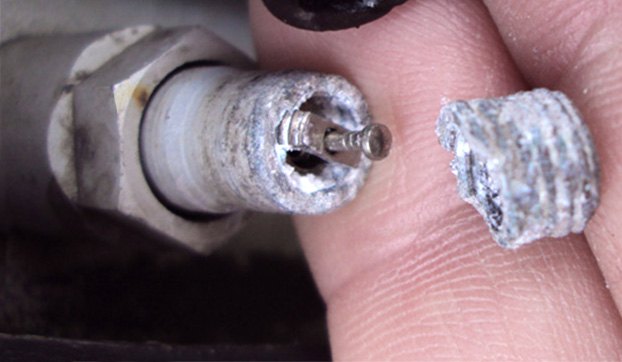

Since a metal valve stem is connected to the sensor which sits on the other side of the tire, it may seem like the only possible fix for those conditions is to replace the entire TPMS sensor inside the wheel. However, that's not the case. We've got repair kits with specially designed tools that let you grind off your old valve stem and replace it with a new one. This process of replacing an outer valve stem without removing the tire is known as "re-coring".
Once that's done, you'll have a new valve stem and valve core pin. This can be performed in 10-15 minutes with a drill and basic hand tools found in the kits. And you won't need to dismount a tire, or even take the wheel off the car. Note that these kits are for repairing damaged outer valves and valve stems only, and cannot address any issues or malfunctions of the TPMS sensor located on the inside of the tire.
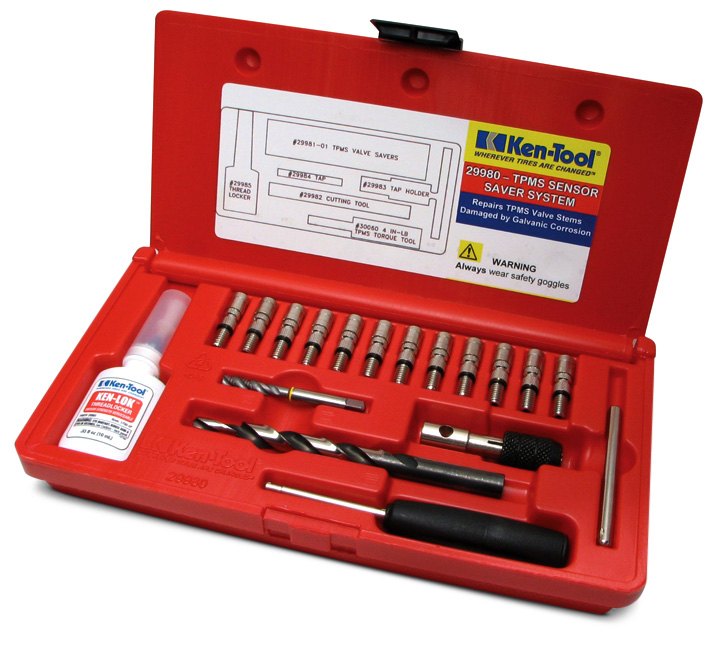
For example, the Dynamic TPMS Service Kit includes a wrench and sockets, tightening tools (with torque-metering capacity), valve stems, and center core pins. Removal tools for grommets are included as well. We've also got the similarly-equipped Ken-Tool TPMS Sensor Rebuild Kit. To give you an idea of what steps are involved with using these kits, we've included a quick overview of how to re-core a valve stem below.
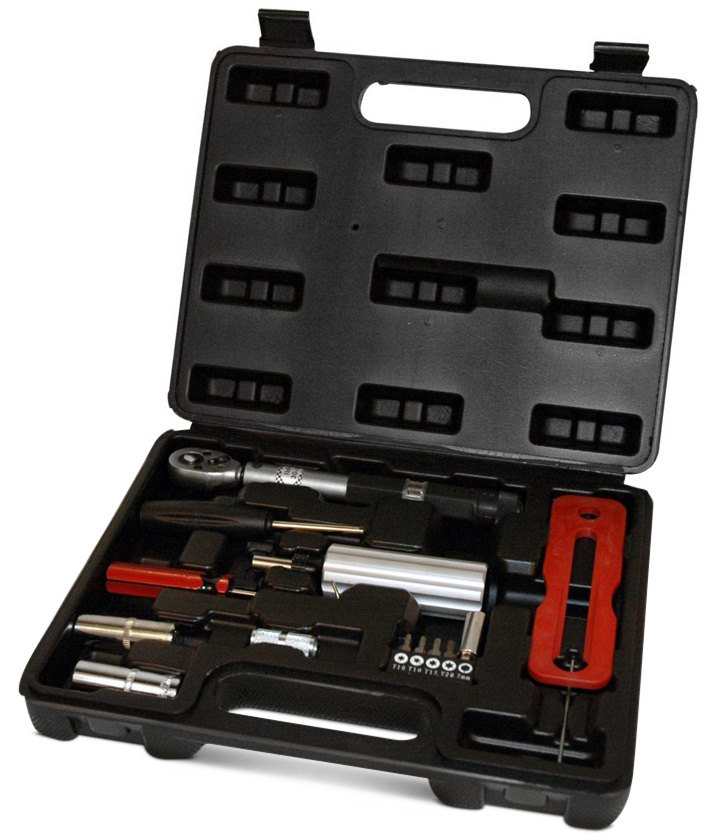
A Quick Overview Of How These TPMS Repair Kits Work
Step 1

Park your vehicle so the tire valve on wheel you'll be working on is positioned at either the 3 o'clock or 9 o'clock position. This will help make drilling a straight hole easier.
Step 2


Remove the valve core (center pin) at the center of the valve stem with either the included removal tool, or with a pair of needle nose pliers. If the core pin is frozen in place and can't be removed, go ahead and drill it out (you'll be replacing it with a new one). Once you do, air will escape and the tire will begin to deflate.
Step 3


The next step is removing the original outer valve stem. The quickest and easiest way to do so is by using a larger drill bit to grind it completely away. Keep grinding until you reach a point about 1/8th of an inch away from the base.
Step 4


Use the tap and tap handle included in your kit to cut new threads inside the remaining part of your valve stem. Twist the tap handle slowly by hand to ensure threads are cut straight and evenly. It's best to cut about 3/4" (.75 inches/19 millimeters) in, or until it suddenly becomes much more difficult to twist the handle.
At this point, reverse the tap out of the valve stem along the new threads you just cut. Blow air inside the valve stem to get any loose strands of metal out.
Step 5
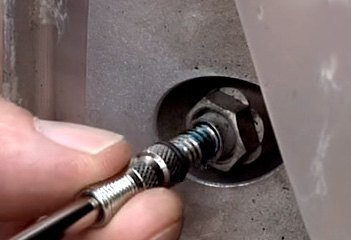

Now you're ready to install the new valve stem included with your kit - inside of the hole and threads you just cut. Since the stem comes complete with a new core pin already inside it, you can use an included valve core torque tool to install your new stem. The tool is designed to grab onto the core pin during the tightening process.
As you approach peak tightness, your torque tool will make an audible click as tightening pressure builds. When the tool clicks multiple times, everything is properly snugged in place and your installation is complete.
Other TPMS Service Kits We Offer
If you need to replace your valve stem and are planning to dismount your tire for other reasons anyway (replacement, repair, etc.), we've got basic kits that include new metal valve stems along with caps and O-ring seals that install from the inside. For example, there's the Dorman TPMS Service Kit and TPMS Valve Stem Kit, Standard TPMS Valve Kit, Dynamic 16-piece TPMS Service Kit Assortment, Standard Intermotor TPMS Valve Kit, and the Crown TPMS Valve Stem Hardware Kit.
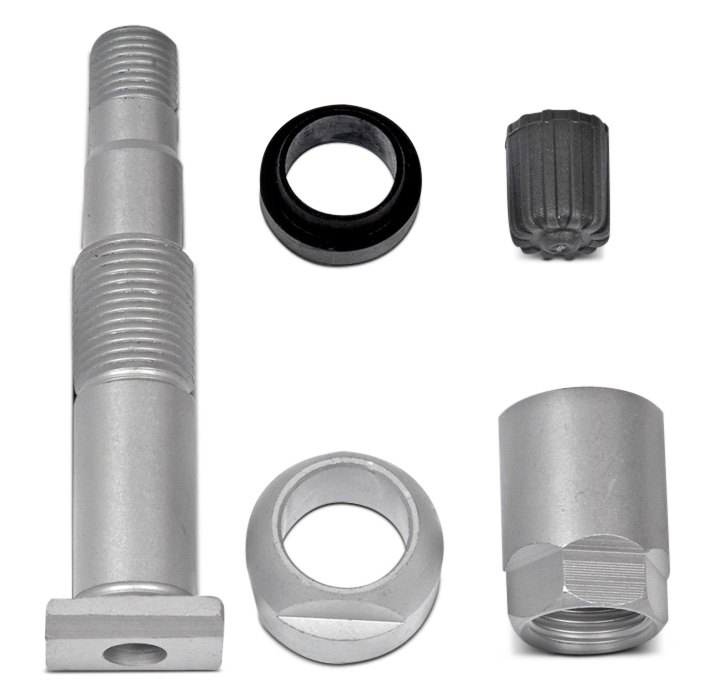
If you don't need a replacement valve stem, kits such as the Standard TPMS Sensor Service Kit, Dynamic 10-Piece TPMS Service Kit, Denso TPMS Sensor Service Kit include only new center pins, O-rings, and assorted hardware.
Kits That Let You Add TPMS To A Vehicle Built Without It
If your vehicle was not originally equipped with a TPMS, we've got cost-effective universal kits that let you transmit, receive, and display tire pressure data - without removal of tires and wheels!

Instead of traditionally-mounted TPMS sensors, the sensors in these kits thread on to the outside of your valve stems - replacing the small plastic caps usually found there. Once installed, these "sensor caps" use the position of the valve stem center pins to determine air pressure. Small transmitters broadcast a signal from each sensor cap to a central digital monitor that plugs into your vehicle's cigarette lighter adapter. Should a pressure drop occur, an alert sounds.
The Omega R&D Excalibur Tire Pressure Monitoring System includes 4 tire cap sensors. If you've got a truck or van with dually rear wheels, the TST 510 with 6 Cap Tire Sensors kit will be a perfect fit because it comes with 6 cap sensors.

If the entire topic of TPMS is new to you, you can brush up on the subject by reading our related articles, "What is the History of Tire Pressure Monitoring Systems?", and "New TPMS Sensors | The Best Choice with Your New Wheels & Tires". We always believe that the more you know about your car or truck, the better-informed purchase decisions you can make. If these TPMS service and repair kits we've introduced in this article do the trick for you, then great! We're happy to know we helped.

